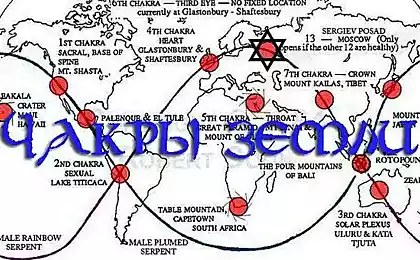1148
The biggest "hole" in the Earth's surface
Kimberlite pipe "Mir" 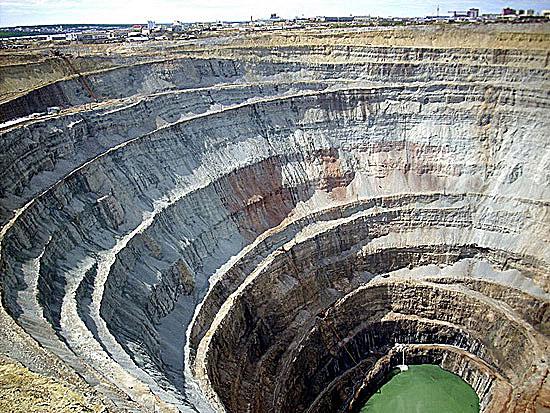
It is the largest open pit diamond Republic of Yakutia, and according to some reports - and the entire world, and contains a quarter of the world's diamonds. With a diameter of 1,200 meters, it goes into the ground at 515 meters, tapering at the base of up to 50 meters.
Giant blue hole, Beliz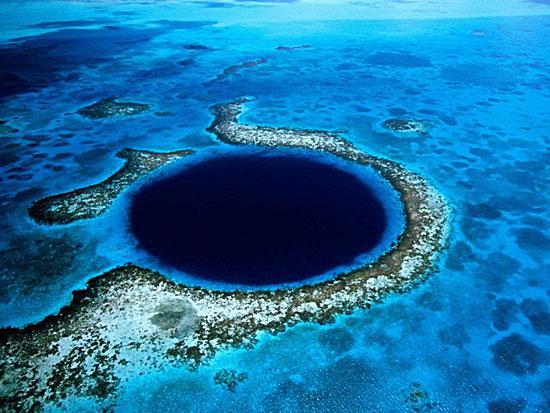
This underwater cave is the vertical diameter of about 300 meters and stretches inland for 120 meters. Once it is part of the limestone caves in the earth's surface. But as a result of melting ice, ocean water rose, which led to the flooding of caves and karst formation of a funnel-shaped spiky shell.
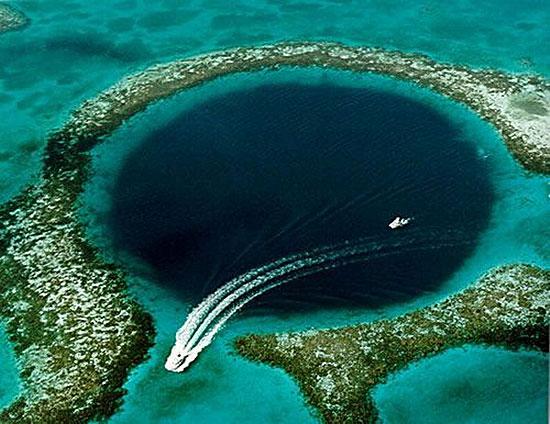
Copper Mine Bingham Canyon, SSHA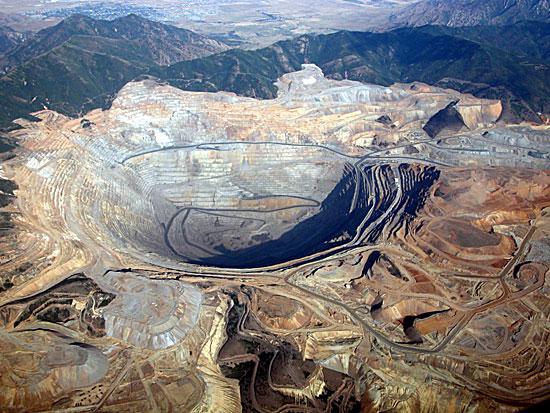
Copper Mine, located in Utah near the town of Salt Lake City, is the largest of its kind on the planet. Copper mining in the open way it is conducted, the quarry is a huge hole in the earth's crust depth of 1, 2 kilometers and a width of 4 kilometers. The area on the surface of the pit is 7, 7 kilometers, and every year its size increases.
Diamond Mine Dyavik, Kanada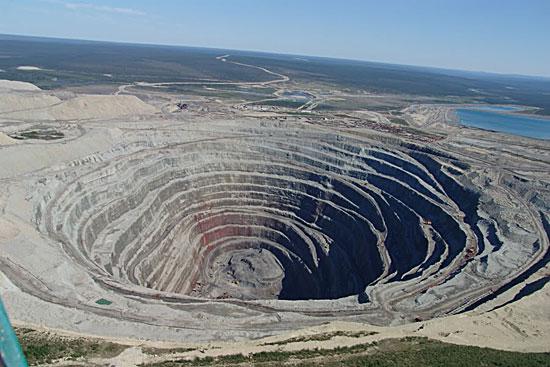
Dyavik Quarry, located in the Canadian province near the city of Yellowknife, is one of the largest open diamond mines in the world. Its depth - 525 meters, diameter - 1,200 meters. The mine produced daily about 20 thousand carats, that is about 4 kilograms, diamonds.
Monticello Dam, SSHA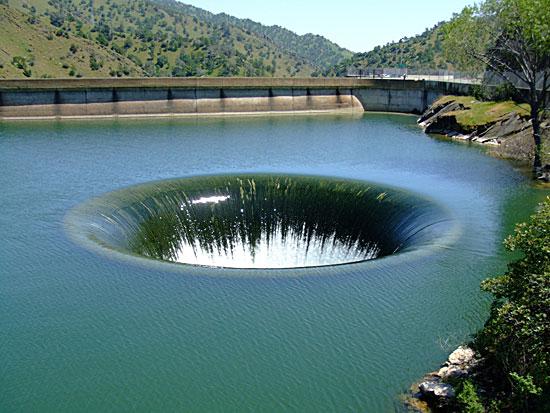
Monticello Dam in the US state of California is known for its unique spillway. Lake Berryessa middle of the lake has a large concrete pipe in which the water flows in the event of changes in the surface level of the reservoir. Previously, there existed a town of the same name, but with the construction of a dam on the lake was flooded, and he is now at the bottom of it.
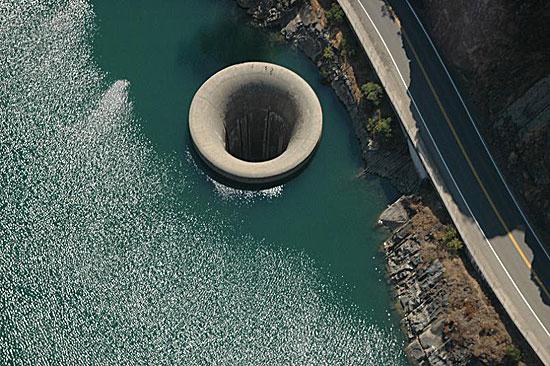
Kimberlite pipe "Big Hole", YUAR
This is a huge, now inactive, Diamond Mine, located in the town of Kimberley in South Africa. "Big Hole" is the largest mine developed by the people "by hand", without the use of technology. In the days when the mine was operating its depth was 240 meters. Now it gradually fills the water. In its place 100 million years ago was the mouth of a volcano.
Karst dip in Gvatemale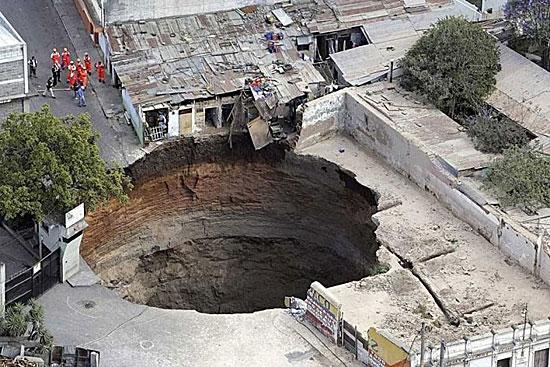
The great failure of karst origin arose in Guatemala after Tropical Storm "Agatha". The hole swallowed the entire three-story building a garment factory. Its size is about 20 meters, and explained the origin of the process of washing away of soil water and bedrock.

Source: landrover-life.livejournal.com
via factroom.ru

It is the largest open pit diamond Republic of Yakutia, and according to some reports - and the entire world, and contains a quarter of the world's diamonds. With a diameter of 1,200 meters, it goes into the ground at 515 meters, tapering at the base of up to 50 meters.
Giant blue hole, Beliz

This underwater cave is the vertical diameter of about 300 meters and stretches inland for 120 meters. Once it is part of the limestone caves in the earth's surface. But as a result of melting ice, ocean water rose, which led to the flooding of caves and karst formation of a funnel-shaped spiky shell.

Copper Mine Bingham Canyon, SSHA

Copper Mine, located in Utah near the town of Salt Lake City, is the largest of its kind on the planet. Copper mining in the open way it is conducted, the quarry is a huge hole in the earth's crust depth of 1, 2 kilometers and a width of 4 kilometers. The area on the surface of the pit is 7, 7 kilometers, and every year its size increases.
Diamond Mine Dyavik, Kanada

Dyavik Quarry, located in the Canadian province near the city of Yellowknife, is one of the largest open diamond mines in the world. Its depth - 525 meters, diameter - 1,200 meters. The mine produced daily about 20 thousand carats, that is about 4 kilograms, diamonds.
Monticello Dam, SSHA

Monticello Dam in the US state of California is known for its unique spillway. Lake Berryessa middle of the lake has a large concrete pipe in which the water flows in the event of changes in the surface level of the reservoir. Previously, there existed a town of the same name, but with the construction of a dam on the lake was flooded, and he is now at the bottom of it.

Kimberlite pipe "Big Hole", YUAR

This is a huge, now inactive, Diamond Mine, located in the town of Kimberley in South Africa. "Big Hole" is the largest mine developed by the people "by hand", without the use of technology. In the days when the mine was operating its depth was 240 meters. Now it gradually fills the water. In its place 100 million years ago was the mouth of a volcano.
Karst dip in Gvatemale

The great failure of karst origin arose in Guatemala after Tropical Storm "Agatha". The hole swallowed the entire three-story building a garment factory. Its size is about 20 meters, and explained the origin of the process of washing away of soil water and bedrock.

Source: landrover-life.livejournal.com
via factroom.ru
Scientists still do not know why people hesitate, laughing, kissing and scratching his nose
Every year there are about 100 online suicide















